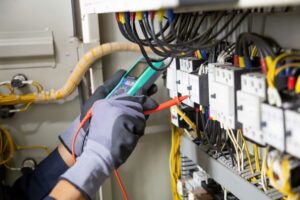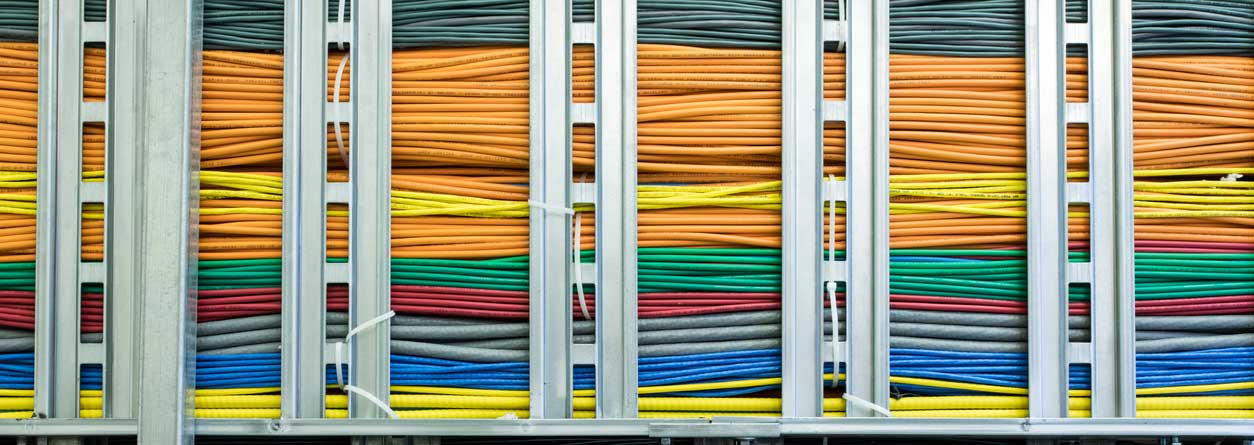
Preparing for structured cabling services is a major challenge when it comes time to set up new building projects or add wiring to existing structures.
Structured cabling provides building tenants with a cohesive system that offers uninterrupted service when done correctly.
When planning for structured cabling, consider the following:
#1: Indoor Vs. Outdoor Cabling
Where will you place your cables; inside or outside? This decision will impact which cables you use and the way they are laid out. Outdoor cables must be installed properly, or they will not work as effectively as they should. In contrast, indoor cables should be installed in a way that does not disrupt the aesthetic of the building.
Ask yourself this question: Have you thought about using direct burial cables in PVC to prevent major outages and digs in case that cable was to be damaged by weather-related events?
#2: What Kind of Bandwidth Do You Need?
Bandwidth is a major concern for businesses that will transmit a large amount of data from their networks. You may face some serious issues if your structured cables are unable to support your organization’s bandwidth requirements. This can negatively impact your bottom line.
Ask yourself this question: You may believe you have new, fast hardware in your data center, but does your structured cabling support your organization’s bandwidth requirements?
#3: Moves, Adds, Changes and Your Furniture Locations
Are your structured cables flexible enough to handle moves and changes (MACs)? This aspect of structured cabling planning is critical to providing structural scalability and flexibility.
It can be very limiting for building tenants if your structured cables don’t support moves and changes. Ask yourself: “What are the chances the cable layout in the building will require MACs?
It is critical to know where conference tables, desks, and server racks will be located. Without this knowledge, it will prove challenging to plan the layout for your structured cabling installation.
Certain furniture styles support specific types of cabling. To avoid unattractive office spaces or one that does not work as efficiently as it could, you must be certain that you install cabling that matches building furniture.
Ask yourself this question: Are you planning your setup for potential MACs in the future, or just setting up what you have today?
#4: Planning IDF and MDF Locations
Some cable types are limited as to how far they can run. For example: running network cables further than 300 feet can cause signal loss to devices at the edge.
If you are unfamiliar with the terms IDF and MDF, think of them as a wheel. The MDF is like the hub, while the IDF is the spokes. Therefore, by properly planning the location of your head end system (hub), then planning your IDF (spokes), you can ensure your cables never run too far. This will allow changes down the line to be less labor intensive.
Ask yourself this question: Have you put network closets in the best locations so that you are set up for flexibility?
#5: Government Regulations
Some regions require a specific structured cabling system depending on the municipalities power network.
You must be aware of any regulations in your area before designing your structured cabling setup. When in doubt, contact the governing body responsible for structured cabling regulations and ask about the rules that are in place, and how they could impact your plans.
Ask yourself this question: Which cables must be in conduit? Which cables need to be non-plenum vs plenum?
Once you’ve answered these questions and other planning considerations, you can commence design finalization and structured cabling installation.
Choose the Right Structured Cabling Provider
 It is important to select the right structured cabling contractor to plan for structured cabling and then execute that plan properly; ensuring your structured cabling fits your budget and operating needs.
It is important to select the right structured cabling contractor to plan for structured cabling and then execute that plan properly; ensuring your structured cabling fits your budget and operating needs.
Working with Mechdyne
Mechdyne can eliminate the guesswork when finding a structured cabling service provider. Our structured cabling solutions include design, cabling, and installation, which creates a streamlined experience and reduces project-related stress. Please fill out the form below if you would like to learn more about our structured cabling solutions.

